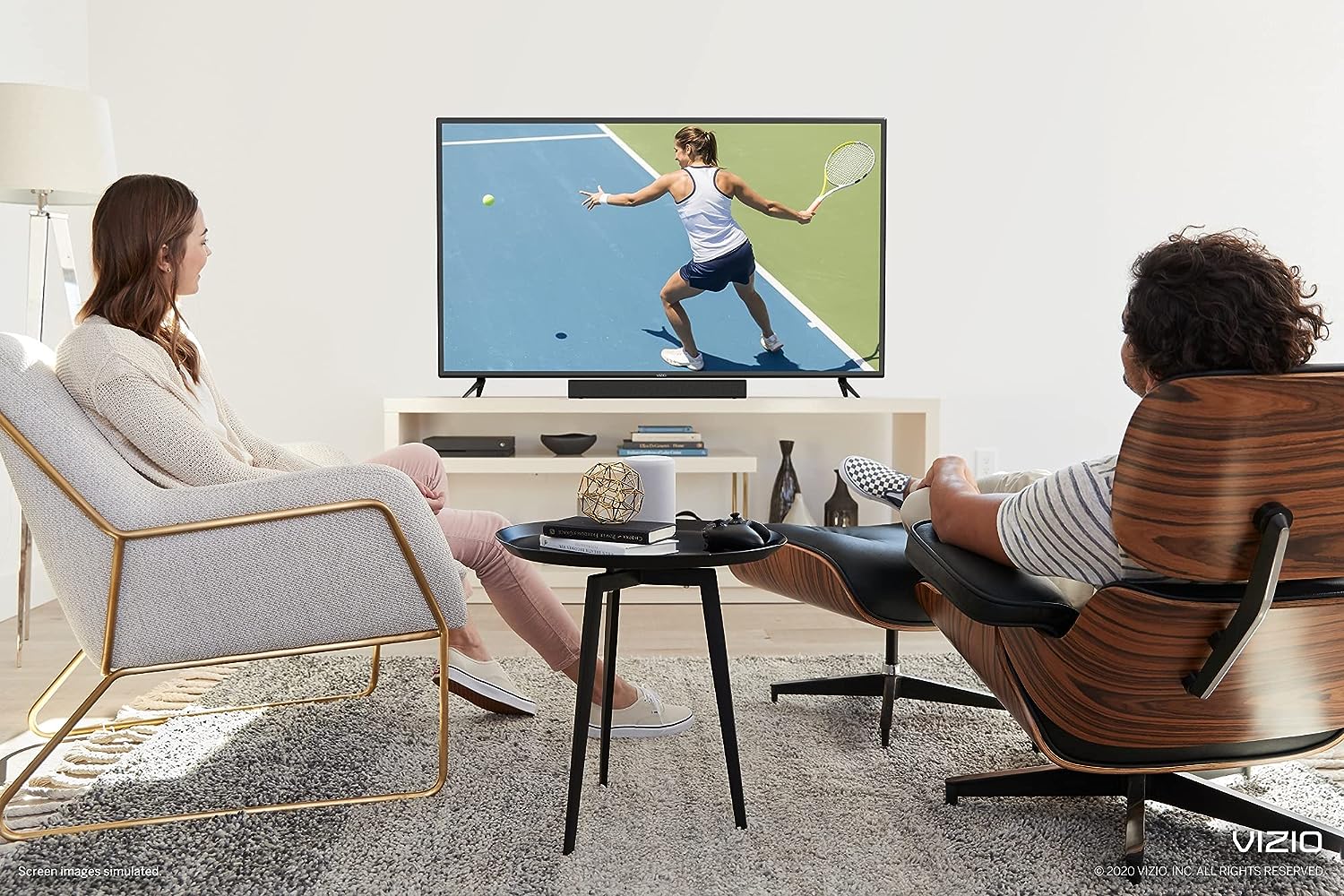1. The Ultimate Guide to Finding the Best Gaming Monitor
Welcome to our comprehensive guide on finding the absolute best gaming monitor for your gaming setup! Whether you’re a hardcore gamer or just starting out, having the right monitor can make all the difference in your gaming experience. But with so many options available, how do you navigate through the sea of choices to find the perfect one? Fear not, as we’re here to help you every step of the way. In this article, we’ll walk you through everything you need to know about gaming monitors, from their definition and background to the key factors you should consider before purchasing one. So, let’s dive in and unlock the secrets to finding your ultimate gaming companion!
[amazon bestseller=”Gaming Monitor” items=”10″]
2. Demystifying Gaming Monitors: What You Need to Know
Gaming monitors are not your average computer screens. They are the powerful engines that drive your gaming sessions, delivering smooth visuals, vibrant colors, and lightning-fast response times to immerse you in the virtual world. By definition, a gaming monitor is a specialized display designed specifically for gaming purposes, boasting features that enhance gameplay and provide an edge over the competition.
In the past, gaming was predominantly experienced on bulkier and slower CRT (Cathode Ray Tube) monitors, but with advancements in technology, LCD (Liquid Crystal Display) and LED (Light Emitting Diode) monitors quickly took over the market. Today, gaming monitors come in various sizes, resolutions, refresh rates, and panel types, catering to different gaming preferences and budgets.
2.1 The Evolution of Gaming Monitors
Just like gaming itself, gaming monitors have come a long way. From the early days of bulky CRT screens to the sleek and ultrawide displays of today, the evolution of gaming monitors has been remarkable. We’ve witnessed the transition from VGA to HDMI, the rise of 4K resolution, and the emergence of curved screens. Modern gaming monitors even support technologies like FreeSync and G-Sync, enabling smoother gameplay by synchronizing the monitor’s refresh rate with the graphics card’s output.
2.2 The Battle of Panel Types: TN, IPS, and VA
In the realm of gaming monitors, panel types play a crucial role in determining the overall gaming experience. TN (Twisted Nematic) panels are known for their lightning-fast response times, making them ideal for competitive gamers who prioritize quick reactions. IPS (In-Plane Switching) panels, on the other hand, provide stunning color accuracy and wide viewing angles, ensuring a visually rich experience. VA (Vertical Alignment) panels strike a balance between the two, offering deeper blacks and better contrast ratios, suitable for gamers who appreciate vibrant visuals.
3. Why Choosing the Right Gaming Monitor Matters
Now that we’ve touched upon what gaming monitors are and their evolution, you may wonder, “Why does the choice of a gaming monitor even matter?” Well, picture this: you’re venturing through a dark dungeon, searching for treasures, when suddenly, an enemy ambushes you from behind. In the blink of an eye, you’re defeated. But why? It could be your monitor’s slow response time, causing a delay between your actions and what you see on the screen. This delay, known as input lag, can be the difference between victory and defeat.
A high-quality gaming monitor can provide a competitive advantage by minimizing input lag, offering a smoother gaming experience, and allowing you to react quickly to in-game events. Additionally, the immersive visuals provided by a gaming monitor can transport you into virtual realms, intensifying your gaming sessions and making your gaming escapades even more enjoyable.
Gaming monitors have also become a key part of gaming setups, with customizable features that allow you to personalize your gaming experience. From adjustable stands and backlighting options to advanced software settings, gaming monitors have become more than just a screen. They’re an extension of your gaming personality, reflecting your style and enhancing your overall gaming setup. So, choosing the right gaming monitor is not just about performance but also about bringing your gaming dreams to life.
In the next sections, we’ll explore the different aspects to consider when purchasing a gaming monitor, including resolution, refresh rate, response time, panel type, and additional features. Let’s level up our knowledge and embark on this exciting journey together!
4. Immersive Gaming Experience
Imagine diving into a virtual world where every detail is crystal clear, every movement is fluid, and every action is seen with impeccable precision. That’s exactly what a high-quality gaming monitor brings to the table. By offering vibrant colors, exceptional contrast ratios, and rapid response times, these monitors immerse you in the heart of the action like never before.
4.1 Colors that Pop: Vibrant and Accurate
One of the key aspects of any gaming experience is the visual aesthetics. Gaming monitors excel in providing vivid and accurate colors, creating a feast for the eyes. With technologies like High Dynamic Range (HDR) and Quantum Dot, these displays offer a broader color spectrum and deeper contrasts. Whether you’re exploring the colorful landscapes of the latest open-world game or engaging in intense combat, an excellent gaming monitor elevates your enjoyment by delivering graphics that truly pop.
4.2 The Fluidity of Motion: Exceptional Refresh Rates
Have you ever experienced frustrating motion blur when you make lightning-fast movements in games? A high-refresh-rate gaming monitor eliminates that annoyance and takes your gaming to a whole new level. With refresh rates of 144Hz or even higher, these monitors refresh the image on the screen several times more per second than a standard monitor. The result? Incredibly smooth visuals. Whether you’re dodging bullets in a first-person shooter or executing complex combos in a fighting game, every action will be displayed with remarkable clarity, allowing you to react swiftly and accurately.
4.3 Minimizing Input Lag: Rapid Response Times
Faster response times can mean the difference between victory and defeat in competitive gaming. Gaming monitors tackle this challenge head-on by providing ultra-low response times, often measured in milliseconds. A rapid response time ensures that the actions you perform with your keyboard, mouse, or controller are instantly translated to the screen with minimal delay. Engaging in high-stakes battles or engaging in fast-paced races becomes a seamless experience, allowing you to fully immerse yourself in the game without any obstructions.
5. Optimal Display Technologies
The world of display technologies is vast and ever-evolving, and gaming monitors are at the forefront of these advancements. These monitors employ a wide array of cutting-edge technologies to enhance your gaming experience and deliver unrivaled visual quality.
5.1 IPS, VA, or TN: Which Panel Type Suits You?
When it comes to gaming monitors, there are three primary panel technologies to choose from: IPS (In-Plane Switching), VA (Vertical Alignment), and TN (Twisted Nematic). Each has its own strengths and weaknesses, so it’s essential to select the panel type that suits your specific gaming preferences. IPS panels offer excellent color reproduction and wide viewing angles, while VA panels offer superior contrast ratios and deep blacks. TN panels, on the other hand, excel in response times, making them a preferred choice for competitive gamers who prioritize speed. Consider your priorities and desired gaming experience when choosing the panel type for your gaming monitor.
5.2 High Dynamic Range (HDR): A Feast for the Eyes
High Dynamic Range (HDR) has revolutionized the way we perceive visuals in gaming. By expanding the dynamic range between the darkest blacks and the brightest whites, HDR allows for more details to be shown in both dark and bright scenes. This technology adds an extra layer of realism to your gaming sessions, providing more depth, vibrancy, and luminosity. With HDR-enabled gaming monitors, you’ll be able to appreciate the stunning sunsets, intricate shadows, and breathtaking explosions in an entirely new light.
5.3 Adaptive Sync: Tearing and Stuttering Begone
Adaptive Sync technologies, such as AMD FreeSync and NVIDIA G-SYNC, tackle the common problem of screen tearing and stuttering. These technologies synchronize the monitor’s refresh rate with the frame rate outputted by your graphics card. The result is a smoother and tear-free gaming experience. No more distractions caused by screen tearing or stuttering, allowing you to stay focused on the game and maintain your competitive edge. When combined with a high refresh rate, Adaptive Sync technologies unlock the potential for seamless gameplay that feels incredibly immersive and responsive.
6. Customizability at Your Fingertips
In the world of gaming, personalization is key. Gaming monitors provide a wealth of customizable features and settings that allow you to tailor your visual experience according to your preferences.
6.1 Fine-Tuning with Calibration
Calibration is an essential aspect of optimizing your gaming monitor to deliver the best possible picture quality. Most gaming monitors offer various settings to adjust brightness, contrast, color saturation, and other parameters. With these controls, you can fine-tune the display to match your liking, ensuring that the colors are accurate and vivid. Whether you prefer a warmer or cooler color temperature, or want to boost the contrast for more clarity in dark scenes, the ability to calibrate your monitor empowers you to create a visual atmosphere perfectly tailored to your tastes.
6.2 Ergonomics: Adapt to Your Comfort
Gaming sessions can stretch for hours, so it’s crucial to have a monitor that supports your comfort. Look for gaming monitors with adjustable stands that allow you to modify the height, tilt, and swivel angles. These ergonomic features enable you to find the optimal position that reduces strain on your neck, back, and eyes, ensuring that your gaming experience remains enjoyable for extended periods. Remember, comfort is a crucial component of maintaining focus and precision during intense gameplay.
6.3 Connectivity: Versatility for All Devices
In the modern digital landscape, gaming expands beyond traditional platforms. Gaming monitors cater to this versatility by offering a range of connectivity options. Look for monitors with multiple HDMI ports, DisplayPort, and USB ports, ensuring that you can connect your gaming console, PC, and other devices simultaneously. With these diverse connection options, you can seamlessly switch between gaming platforms without the hassle of cable swapping, allowing you to focus on gaming rather than setup logistics.
7. The Best Gaming Monitor for Competitive Gamers
7.1 The Importance of Refresh Rate and Response Time
When it comes to competitive gaming, every millisecond matters. That’s why the best gaming monitor for competitive gamers is one that offers a high refresh rate and quick response time. A higher refresh rate, typically measured in Hertz (Hz), ensures smoother motion and reduces blurring or ghosting, allowing you to spot your enemies with greater clarity. A response time of 1ms or lower is crucial for eliminating motion artifacts and preventing lag, which can make all the difference in fast-paced games.
7.2 Considerations for Size and Resolution
Another crucial factor for competitive gamers is screen size and resolution. While a larger screen can provide a more immersive experience, it also means your eyes need to cover more ground, potentially affecting your reaction time. Opting for a 24 to 27-inch monitor can strike a balance between immersion and the ability to quickly scan the entire screen.
As for resolution, a 1080p Full HD monitor is often sufficient for most competitive games, as it allows for higher refresh rates and ensures smoother gameplay. However, if you have a powerful gaming rig and enjoy visually stunning, detail-rich games, you may opt for a higher resolution like 1440p or even 4K. Keep in mind that higher resolutions can put more strain on your graphics card, potentially impacting your frame rates.
7.3 Examples of Gaming Monitors for Competitive Gamers
There are several excellent gaming monitors that cater specifically to the needs of competitive gamers. The ASUS ROG Swift PG259QN is a popular choice, featuring a 24.5-inch screen, 360Hz refresh rate, and 1ms response time. It’s specifically designed to offer a competitive advantage, allowing you to react faster and stay ahead of your opponents.
For those who prefer a larger screen, the Dell Alienware AW3420DW is a 34-inch ultrawide monitor with a 120Hz refresh rate and 2ms response time. With its immersive display, this monitor is particularly suited for competitive gamers who want a wider field of view without sacrificing responsiveness.
8. Alternatives and Considerations for Different Gaming Experiences
8.1 Curved vs. Flat Monitors
While flat monitors have been the traditional choice for gaming, curved monitors have gained popularity in recent years. Curved displays can create a more immersive experience, making you feel like you’re part of the game. The gentle curve can also reduce eyestrain by minimizing peripheral distortion. However, it’s important to note that curved monitors may not be suitable for everyone and may require an adjustment period.
8.2 Budget-Friendly Gaming Monitors
Not everyone has an unlimited budget, but that doesn’t mean you can’t find a great gaming monitor. There are plenty of budget-friendly options that still offer impressive performance. AOC CQ32G1 and MSI Optix MAG241C are two examples of affordable gaming monitors that deliver excellent value for their price. While they may not have all the bells and whistles of higher-end models, they provide a solid gaming experience without breaking the bank.
9. A World of Gaming Awaits with the Perfect Monitor
Who knew that choosing the right gaming monitor could open up a world of gaming possibilities? Whether you’re a competitive gamer seeking the highest refresh rates and response times or a casual gamer looking for an immersive experience, the perfect monitor awaits.
Remember, gaming monitors are not one-size-fits-all. It’s important to consider your personal preferences, gaming habits, and budget when making a choice. Take the time to research and read reviews to find the monitor that ticks all the boxes for your gaming needs.
So go ahead, upgrade your gaming setup with a monitor that will elevate your gaming experience to new heights. Embrace the world of lifelike visuals, seamless gameplay, and let your skills shine on a canvas built specifically for gaming. The best gaming monitor is waiting for you to claim your victory. Happy gaming!

Frequently Asked Questions
1. What makes a gaming monitor the best?
A gaming monitor is considered the best when it offers fast response times, high refresh rates, and excellent image quality. These features contribute to a smooth gaming experience with minimal motion blur and screen tearing.
2. What is the ideal monitor size for gaming?
The ideal monitor size for gaming largely depends on personal preference and the available space. However, most gamers find that monitors between 24 and 27 inches offer a good balance between immersive gameplay and comfortable viewing.
3. Is a higher resolution monitor always better for gaming?
Not necessarily. While higher resolutions, such as 4K, can provide stunning visuals, they require powerful hardware to run games smoothly at native resolutions. For most gamers, a 1080p or 1440p resolution monitor is a reasonable choice, offering a good balance between performance and visuals.
4. What is the significance of refresh rate in a gaming monitor?
Refresh rate refers to the number of times a monitor refreshes its image per second, measured in Hertz (Hz). Higher refresh rates, such as 144Hz or 240Hz, allow for smoother gameplay by reducing motion blur. However, the benefits of higher refresh rates are more noticeable in fast-paced games like first-person shooters.
5. Should I consider other features like G-Sync or FreeSync?
Yes, if you have a compatible graphics card. G-Sync and FreeSync are adaptive sync technologies that synchronize the monitor’s refresh rate with the graphics card’s output, reducing image tearing and stuttering during gameplay. If your graphics card supports either technology, consider getting a monitor with the corresponding support for the best experience.












